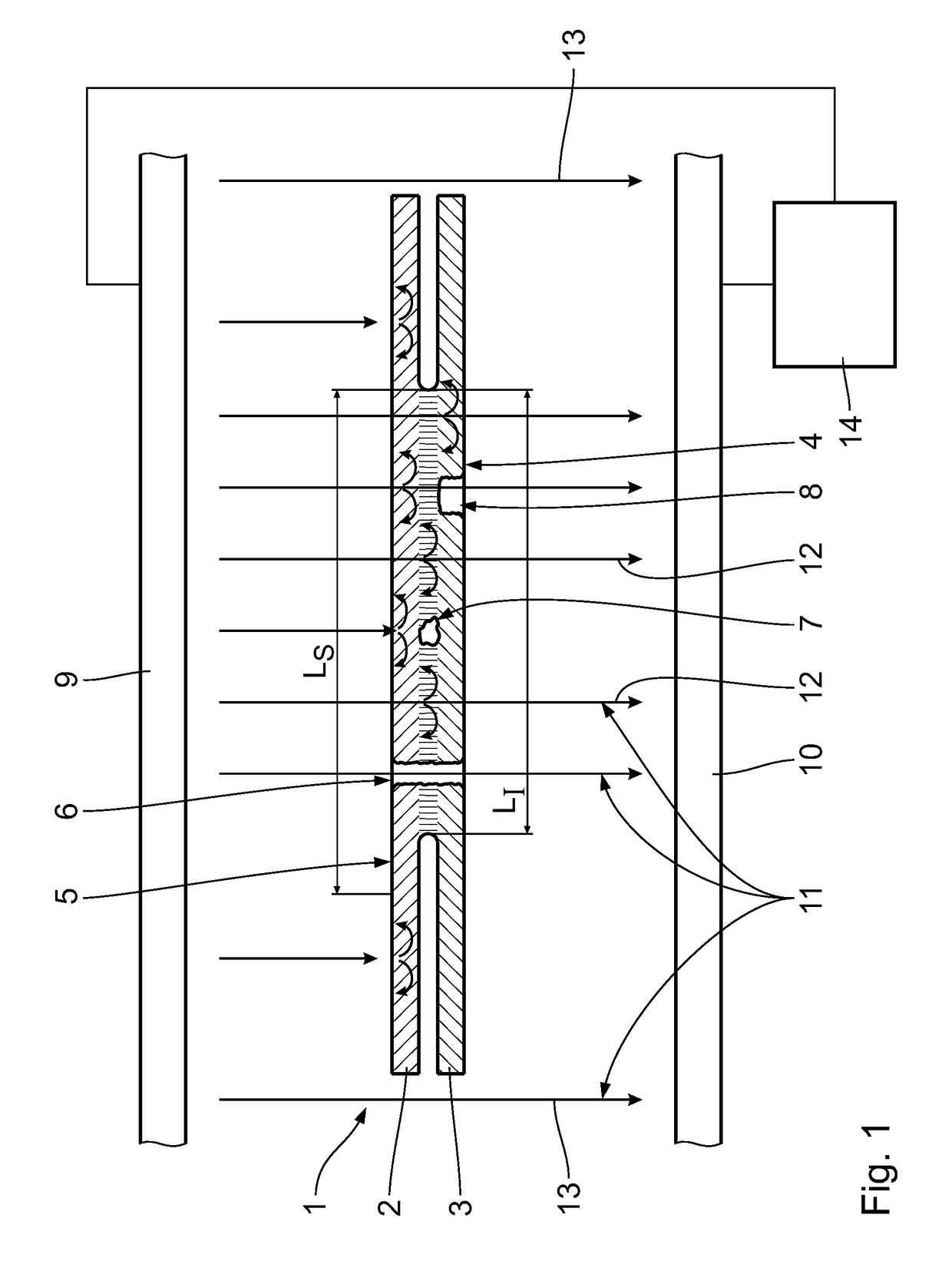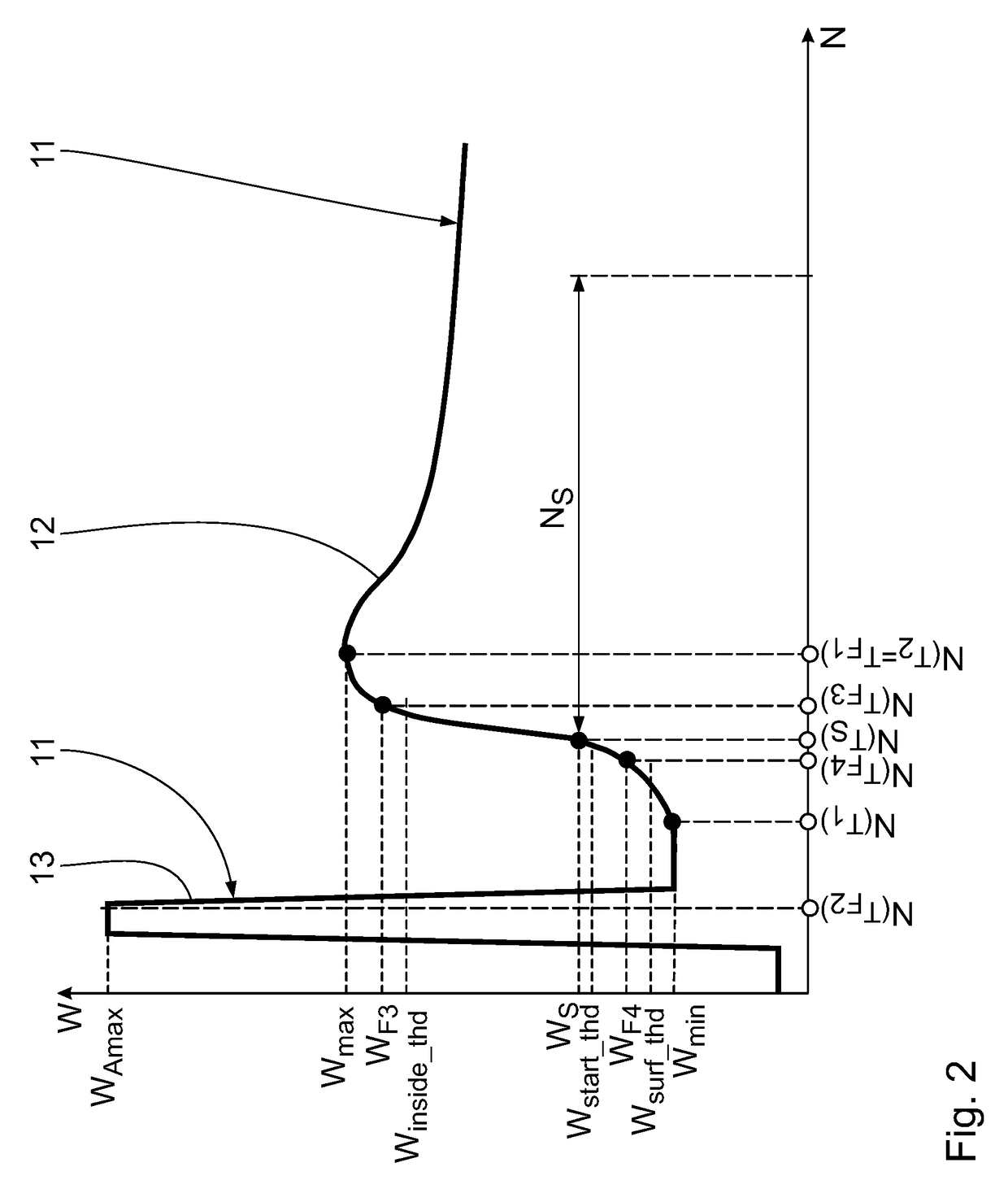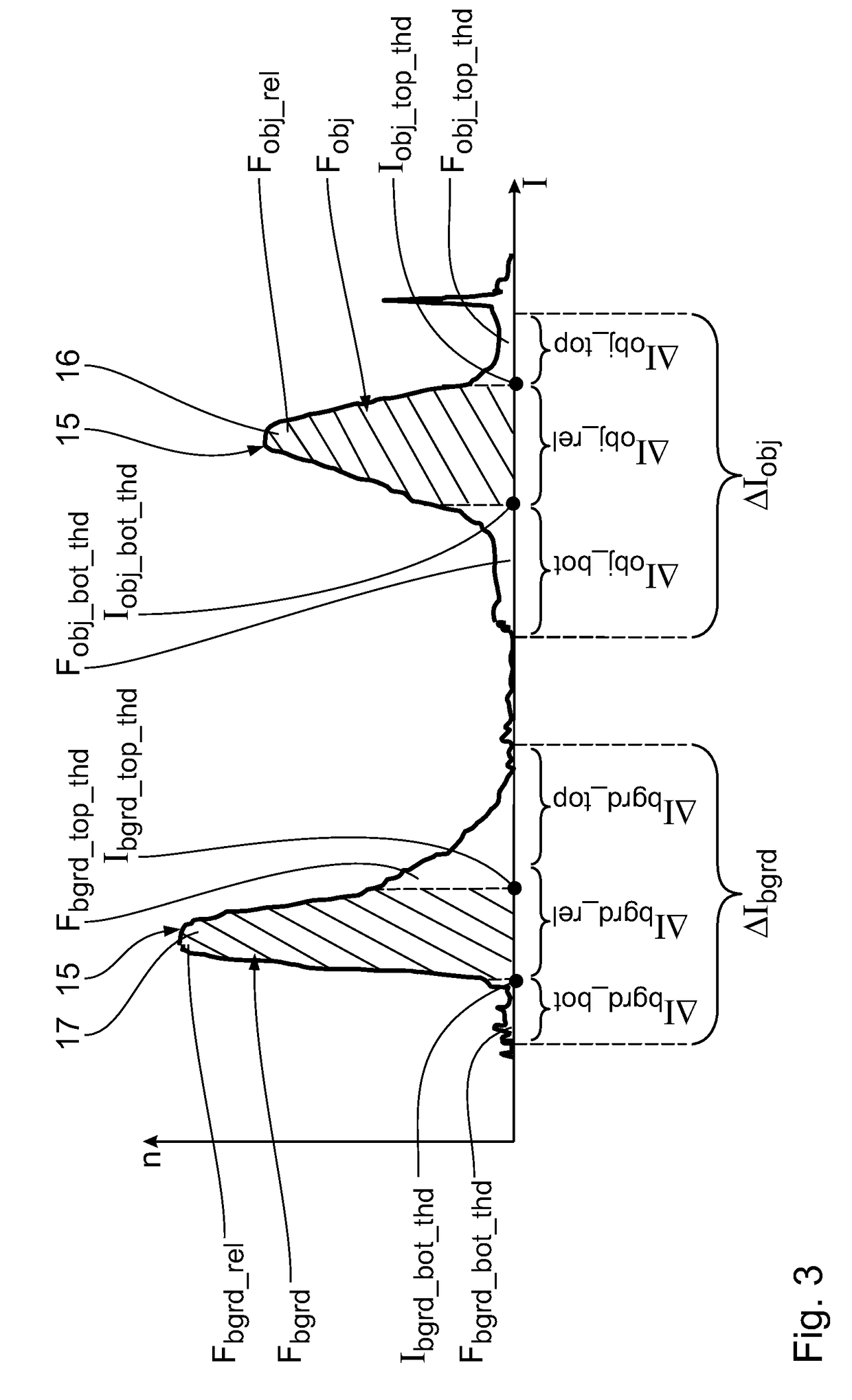Method for the automatic inspection of a welding seam by means of heat flow thermography
a technology of heat flow and welding seam, which is applied in the direction of radiation pyrometry, instruments, material analysis, etc., can solve the problems of insufficient full penetration welding, insufficient welding seam length, and most varied types of defects in welding seam production, so as to achieve reliable detection and evaluation
- Summary
- Abstract
- Description
- Claims
- Application Information
AI Technical Summary
Benefits of technology
Problems solved by technology
Method used
Image
Examples
Embodiment Construction
:
[0042]An object 1 to be checked has a first joint partner 2 and a second joint partner 3, which are connected to one another by a welding connection in the form of a welding seam 4. The joint partners 2, 3 are configured as metal sheets. The welding seam 4 was produced, for example, by means of an electron beam, laser beam or laser hybrid welding method. The material of the joint partners 2, 3 is fused together in the region of the welding seam because of the welding process. The object 1 with the welding seam 4 will also be designated the welded material below.
[0043]The welding seam 4 has a plurality of defects of various types. As an example of a first defect type, the welding seam 4 has a geometric defect 5. The geometric defect 5 is a deviation of a desired length LS from an actual length LI. Furthermore, the welding seam 4, as a defect of a second defect type, has a continuous defect 6 in the form of a hole through the welding seam 4. As a defect of a third type, the welding s...
PUM
 Login to View More
Login to View More Abstract
Description
Claims
Application Information
 Login to View More
Login to View More - R&D
- Intellectual Property
- Life Sciences
- Materials
- Tech Scout
- Unparalleled Data Quality
- Higher Quality Content
- 60% Fewer Hallucinations
Browse by: Latest US Patents, China's latest patents, Technical Efficacy Thesaurus, Application Domain, Technology Topic, Popular Technical Reports.
© 2025 PatSnap. All rights reserved.Legal|Privacy policy|Modern Slavery Act Transparency Statement|Sitemap|About US| Contact US: help@patsnap.com



